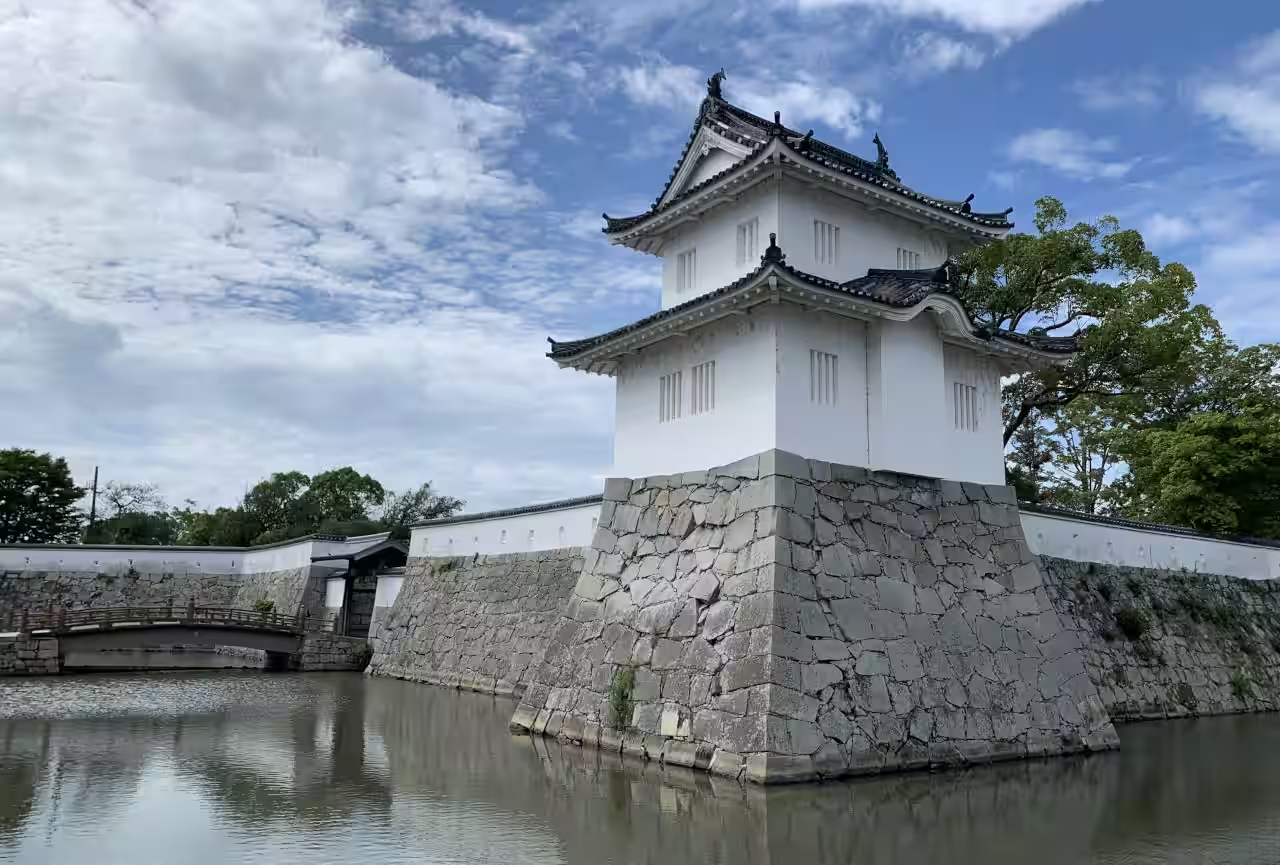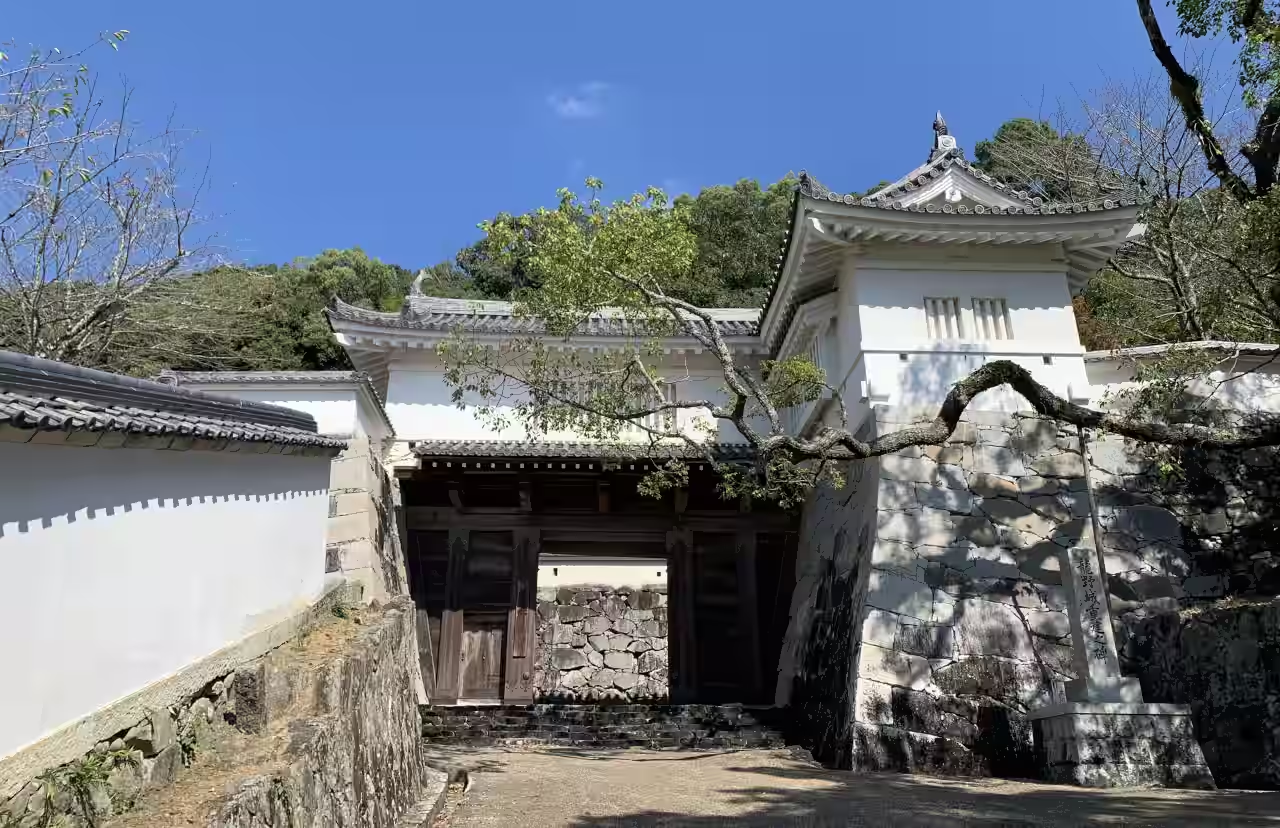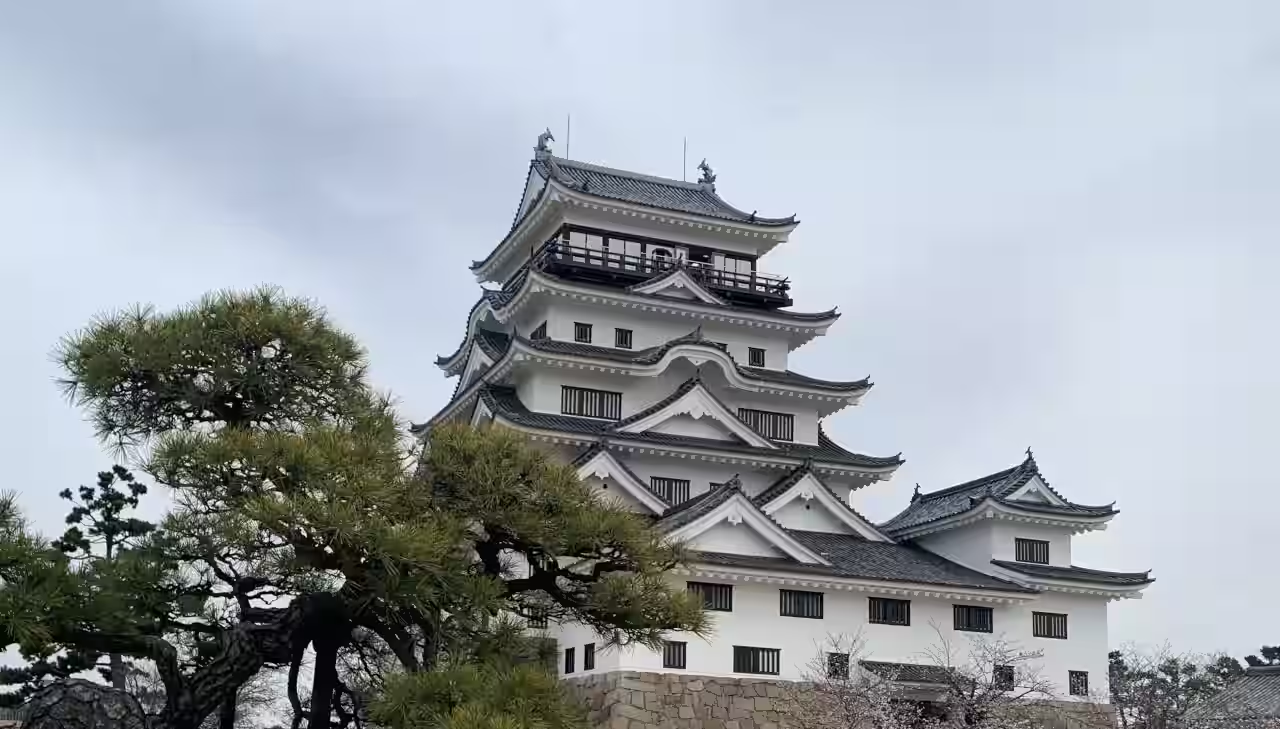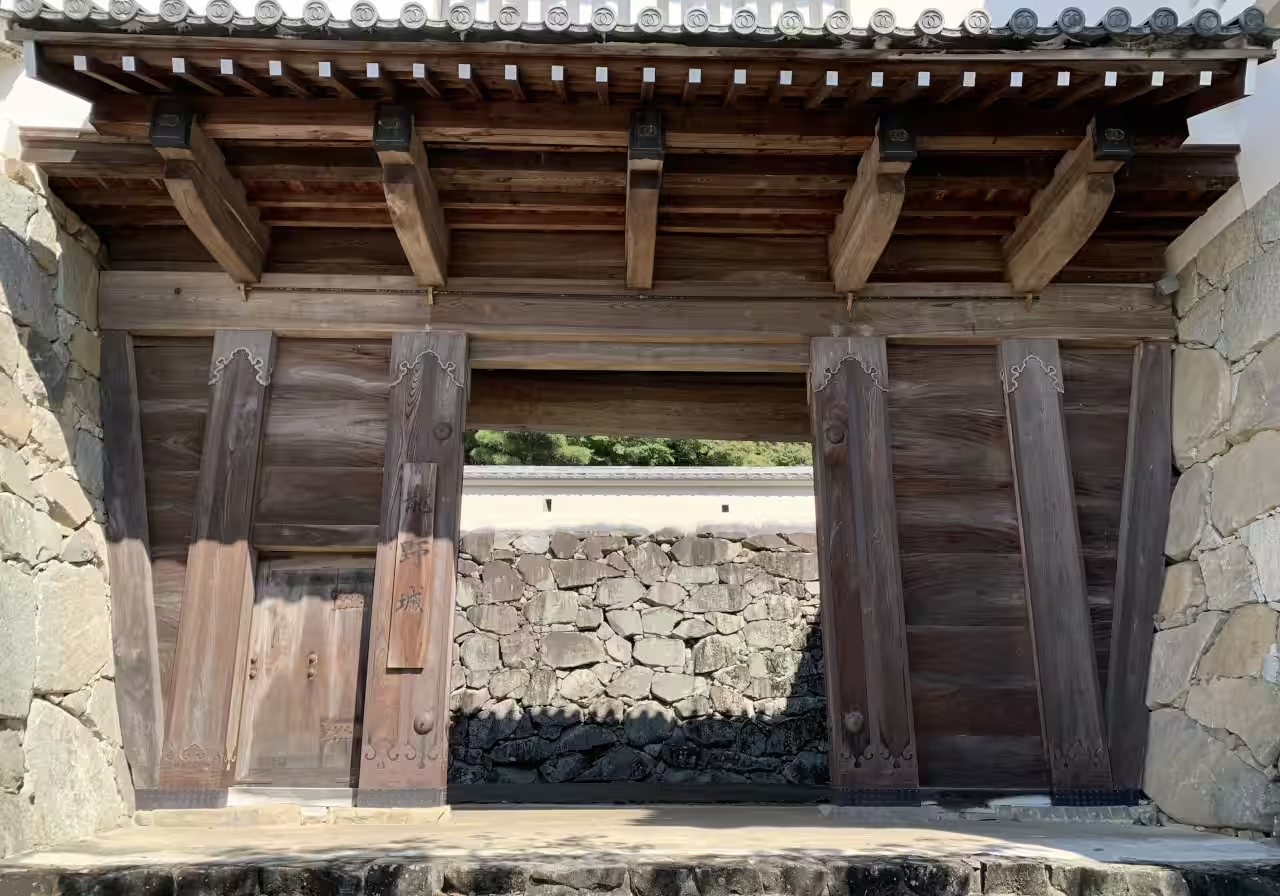The ancestry memo written by my great-grandfather includes the following entries:
The Hashimoto family’s ancestor was a vassal of Lord Asano of the Ako clan in Banshu (present-day Hyogo). When the Asano family fell, he became a ronin (masterless samurai) and settled in Oe Town, Ibara, Okayama.
It didn’t take me long to realize that the decline of the Asano family was part of the famous story of the 47 Ronin, which has been widely dramatized, filmed, and well-documented. The incident traces back to the morning of March 14, 1701, when the third lord of the Ako domain, Asano Naganori, attacked Kira Kozuke-no-suke, the chief ceremonial official of the Edo shogunate, with a wakizashi (a short Japanese sword) inside Edo Castle. However, the attack was unsuccessful, setting off a chain of events that would later be immortalized in Japanese history and folklore.
The fifth shogun, Tokugawa Tsunayoshi, was furious, as the shogunate was in the midst of hosting an envoy from the Imperial Court at Edo Castle. As a result, Asano Naganori was ordered to commit seppuku on the same day. The shogunate did not apply the usual rule of kenka ryōseibai (punishing both parties involved in a quarrel), leaving Kira unpunished. This decision deeply upset Asano's vassals, ultimately leading them to take justice into their own hands a year later.
At the Hyogo Prefectural Library, I obtained copies of the Bungen-chō records of the Ako clan under Lord Asano. Two vassals with the Hashimoto family name are listed: Heisuke, holding the position of Cavalry Guard, and Jihei, serving as Construction Magistrate. Since my great-grandfather's memo does not include a first name, I could only confirm the story without positively identifying which one is my ancestor.
Interestingly, Heisuke (Heizaemon), the former of the two, joined the league of loyalty in planning revenge. However, he became infatuated with Hatsu, a courtesan at Awajiya, a teahouse along the Shijimi River, also known as the Sonezaki River, in the heart of Osaka. At the age of 18, Heizaemon ultimately committed a lovers' suicide with Hatsu—a month before the revenge took place. Wikipedia, however, notes that "Heisuke" was Heizaemon's childhood name, but given the age, it may have actually referred to his father, suggesting that it was not Heisuke himself but his son who committed suicide.
The day after visiting Tatsuno to follow in the footsteps of my Takagi ancestors, as mentioned in my previous post, I traveled further southwest to the city of Ako to do the same for my Hashimoto ancestors. At Kagakuji Temple, built in 1645 by Asano Naganao, the first lord of the Ako clan, there are gravestones of the 47 ronin, where only their hair is buried. Their bodies were interred at Sengakuji Temple in Tokyo, where they committed seppuku following the revenge.
 Gravestones of the 47 Ronin at Kagakuji Temple — each stone bears the samurai's name, along with an additional kanji character of yaiba (meaning "blade"), symbolizing the honorable seppuku they committed. Seppuku (harakiri) was not allowed for ordinary people, as it was a privilege reserved for samurai to die with honor. Only one stone is without this mark, for the samurai who disappeared after the attack.
Gravestones of the 47 Ronin at Kagakuji Temple — each stone bears the samurai's name, along with an additional kanji character of yaiba (meaning "blade"), symbolizing the honorable seppuku they committed. Seppuku (harakiri) was not allowed for ordinary people, as it was a privilege reserved for samurai to die with honor. Only one stone is without this mark, for the samurai who disappeared after the attack.
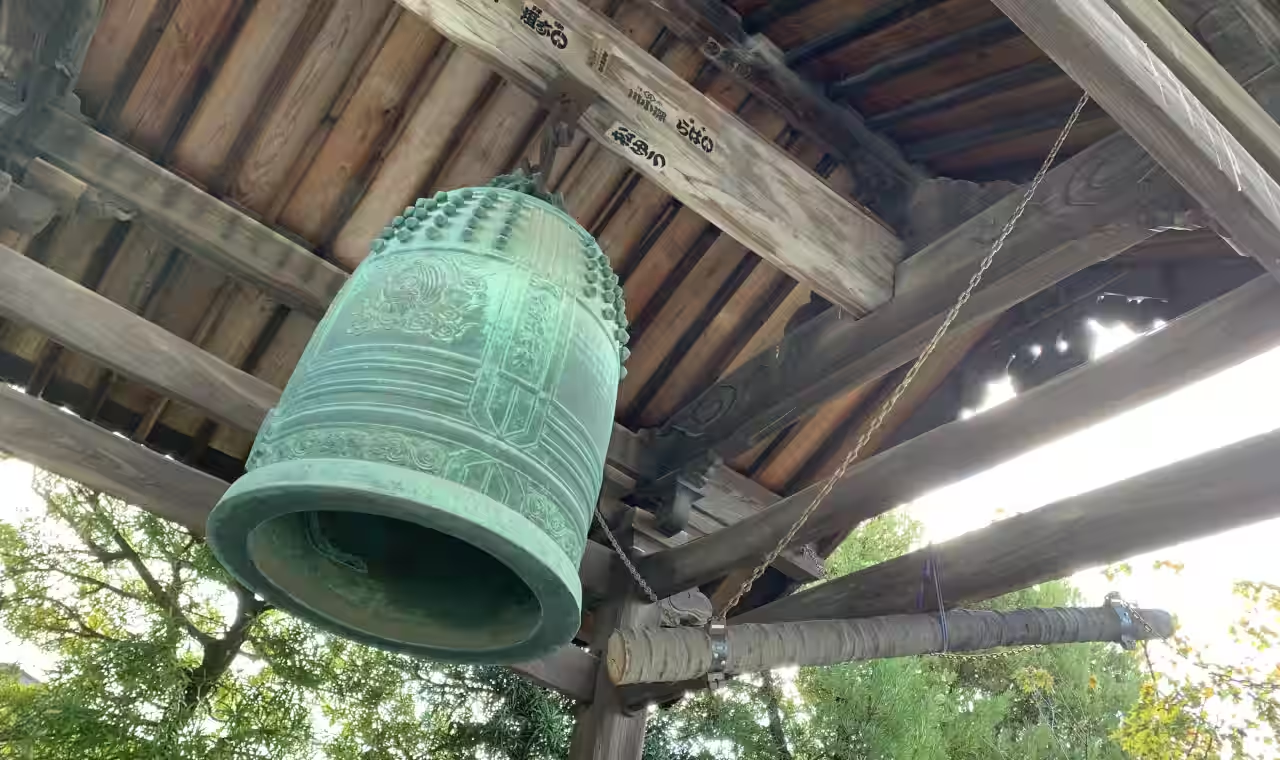 The Bell of Kagakuji Temple – When news of the deaths of the 46 samurai reached Ako, the townspeople gathered at Kagakuji Temple, struck this bell repeatedly, and mourned.
The Bell of Kagakuji Temple – When news of the deaths of the 46 samurai reached Ako, the townspeople gathered at Kagakuji Temple, struck this bell repeatedly, and mourned.
Items belonging to or used by Lord Asano and the 47 Ronin, later donated by widows, surviving family members, and descendants, are on display in a hall at the temple. The moment I saw a particular item, the reality of what had happened struck me. It was a knife used by Oishi Kuranosuke, the leader of the 47 Ronin, to finish off Kira Kozuke-no-suke.

This weapon is not a typical Japanese sword; it features a narrow, almost stick-like straight blade, approximately 18 cm in length, seemingly designed to penetrate deeply into vital points. The blade was forged by the renowned swordsmith Sanjo Kokaji of Sanjyo-bo town in Kyoto.
After Ako Castle was confiscated by the Bakufu, Oishi Kuranosuke moved to Yamashina, Kyoto, where he and his men meticulously plotted their revenge for months. Coincidentally, his residence was just 3 miles away from the swordsmith’s workshop. It is likely that this knife was specially commissioned in preparation for the final act of the vendetta.
On April 19, 1701, a month after the incident at Edo Castle, the Bakufu deployed a force of 6,000 armed samurai from the neighboring Tatsuno and Ashimori clans to take possession of Ako Castle and escort out the late Asano’s vassals. The operation was completed peacefully, without resistance. The domain samurai and their families were given 30 days to relocate from the town of Ako.
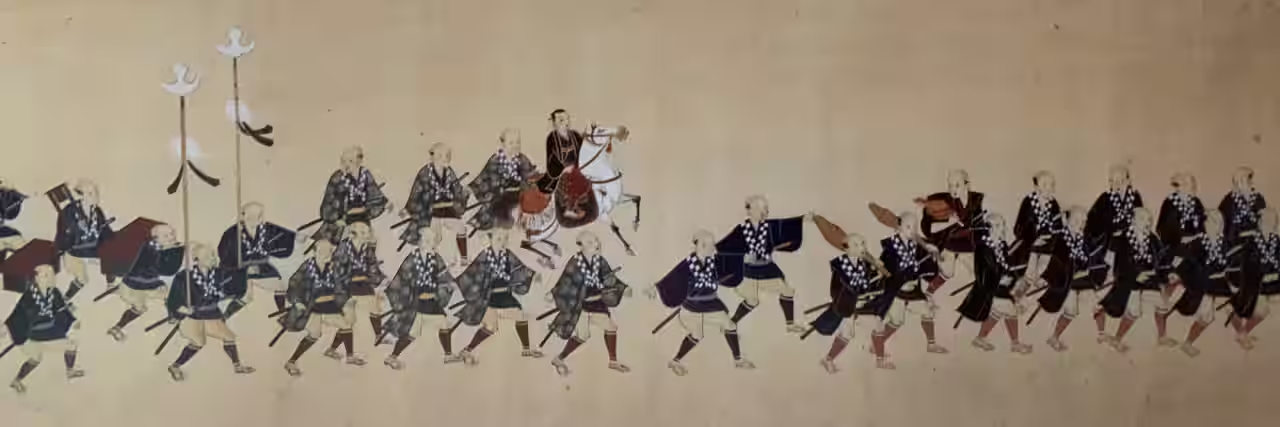 The painting above, created by an artist from the Tatsuno domain in 1784 and housed in the Tatsuno City History and Culture Museum, illustrates samurai of the Tatsuno clan marching to Ako under orders from the Bakufu to seize control of the castle.
The painting above, created by an artist from the Tatsuno domain in 1784 and housed in the Tatsuno City History and Culture Museum, illustrates samurai of the Tatsuno clan marching to Ako under orders from the Bakufu to seize control of the castle.
My Hashimoto ancestor lived through extraordinary times, losing both his position and his home, and became a ronin. Furthermore, he faced the agonizing decision of joining the vendetta to honor his fallen lord or prioritizing the survival and well-being of his family; ultimately, he chose the latter.
